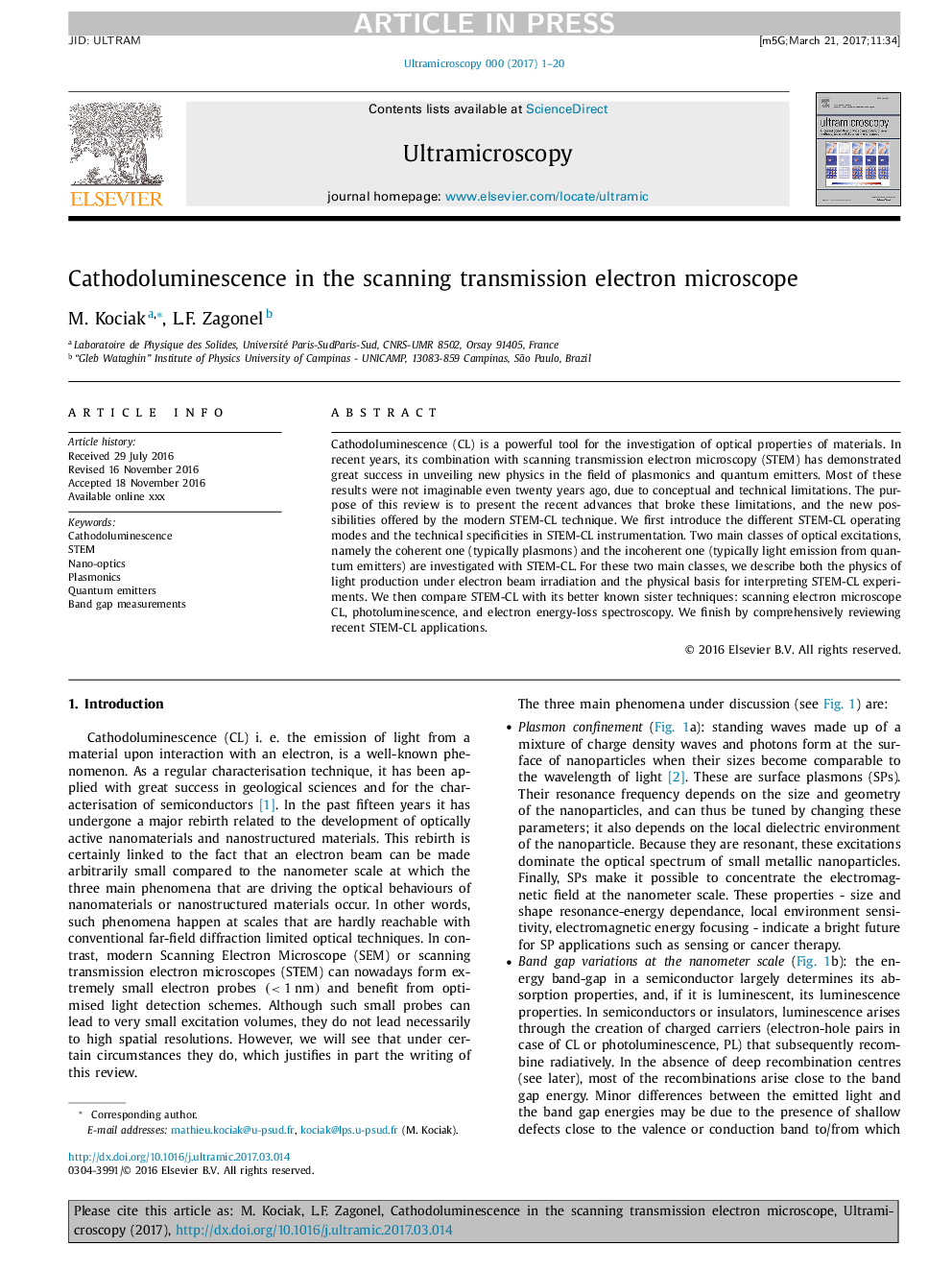| Article ID | Journal | Published Year | Pages | File Type |
|---|---|---|---|---|
| 5466889 | Ultramicroscopy | 2017 | 20 Pages |
Abstract
Cathodoluminescence (CL) is a powerful tool for the investigation of optical properties of materials. In recent years, its combination with scanning transmission electron microscopy (STEM) has demonstrated great success in unveiling new physics in the field of plasmonics and quantum emitters. Most of these results were not imaginable even twenty years ago, due to conceptual and technical limitations. The purpose of this review is to present the recent advances that broke these limitations, and the new possibilities offered by the modern STEM-CL technique. We first introduce the different STEM-CL operating modes and the technical specificities in STEM-CL instrumentation. Two main classes of optical excitations, namely the coherent one (typically plasmons) and the incoherent one (typically light emission from quantum emitters) are investigated with STEM-CL. For these two main classes, we describe both the physics of light production under electron beam irradiation and the physical basis for interpreting STEM-CL experiments. We then compare STEM-CL with its better known sister techniques: scanning electron microscope CL, photoluminescence, and electron energy-loss spectroscopy. We finish by comprehensively reviewing recent STEM-CL applications.
Related Topics
Physical Sciences and Engineering
Materials Science
Nanotechnology
Authors
M. Kociak, L.F. Zagonel,
